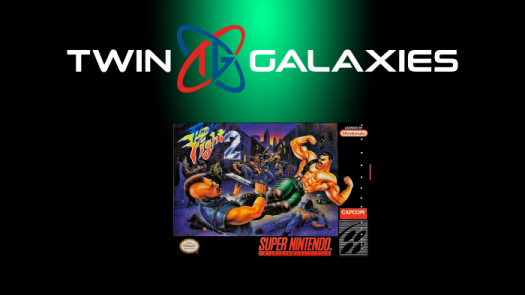Phil Day is the former Galaga Tournament World Record holder (2009 - 2011). He was one of ten Galaga players in the world chosen compete in at the First International Galaga World Championship, Score Wars, Meow Wolf (2018). He is also the Co-Founder and Administrator of Galaga Forum. Day is currently ranked #4 on the Twin Galaxies leaderboard for Galaga Tournament. The following essay was written by and offered with his permission for publication in full on Twin Galaxies Editorial.
There are currently six people chasing the world record on the classic game Pole Position, but oddly there are no spectators. Which is of concern, considering the score being chased is possibly the longest standing classic arcade game world record. Only two years after its release in 1982, Les Laiger scored 67,310 points at the Video Game Masters Tournament, San Jose. And to this day, that same score, has never been matched. Unfortunately, Laiger's 67,310 point game was not captured on film, leaving gamers blind to any strategies or tactics employed in the legendary run.
Nevertheless, three recent official scores are trailing close behind. The closest one is Richie Knucklez's 66,510 points set in 2009, a score that has just been equaled (unofficially) by Ken House and Jon McAllister. The difference may be that Laiger's skill was put to the test under the pressures of live-competition, and maybe that's what's missing to truly push his trailer competitiors to their true limits in the game.
Ken House & Jon McAllister's Chase For Glory

House and McAllister are somewhat working as a team. Both investigating the programming behaviour of Pole Position and monitoring and each other's laps, but McAllister is the primary driver. Together, they have gone back and forth on whether the score can be beat. Currently, they both believe it can be not only matched, but also beaten. But, that's not by much, for various reasons.
The interest in Laiger's score began in December, 2017, turning more serious around April this year 2018. Since then various oddities have been unearthed, as well as obstacles surrounding Pole Position scores above 66,510 points.
For some reason, a time ending in .28 or .29 seconds are are awarded more points, than a time ending in .2 seconds. The graphics run at 60 frames per second while the timer runs at 40 frames per second. Furthermore, the arrangement of other cars on the track is determined by where the competitor crosses the start-finish line on the preceding lap within a margin of one pixel.
These oddities have been tested over and again by House and McAllister, and on two Pole Position cabinets - one upright cabinet and one cockpit cabinet - both by Atari, but not yet on the original release from Namco.
The difference between the Atari and original Namco version is well-known among the Pole Position community: the original Namco version displays the Marlboro cigarette and Pepsi-Cola designs on billboards around the track, which are absent on for the Atari version. But that might not be the only differences. House and McAllister don't believe the changing of these graphics altered the overall game play, but it is evidence the programming was altered, and they suspect, maybe, Atari made some adjustments to the game play.
When viewing footage from Namco's Pole Position, House and McAllister noticed the arrangement of cars is different and, at particular areas of the race track, the competitor's car is possibly faster, which enables greater traction when turning on the inside of the track. Soon, House and McAllister will have Namco printed circuit boards to test their theories, and if they're right, McAllister (the stronger driver of the two) may be able to lift his average score 66,000 plus points to 67,000 plus points. To do so, he will need to complete the first lap - the qualifying lap - in a low 56.00 seconds, complete the next two laps around 52.2 seconds, and lastly complete the final slower lap with a low 53 seconds. The last lap is slower due to programming theatrics. Just before the competitor crosses the finishing line, the computer programming takes control of the car, slows the car down and centers it to the middle of the screen.
The result should be an approximate time of 107.2 seconds, on par with or defeating a score that has been ticking for about 1,072,936,368 seconds (34 years)... and counting.
The Drive For Victory (Or Lack Thereof)
McAllister is still two seconds shy of breaking the world record, but should he do it, the gaming community will likely know the result before seeing the race (if they see the race at all). It's hardly a desirable order for any competitive sport. But, with only six known competitors who are currently trying to break it, should one of them succeed, the number of competitors will be even less - most likely, zero. This is true of many classic arcade gaming world records, including the infamous Donkey Kong. However, unlike Pole Position, Donkey Kong continues to be a hot bed of player interaction and score-chasing.
"In the early 2000's, you could go through many old titles and pick the lowing hanging fruit, but by 2010, players had to climb the tree,” McAllister explained. “And since then, some titles have changed hands quite few times, Donkey Kong being the most active. I'll never go after that record. It'd take a solid two years to beat that score. And some luck."
Robbie Lakeman, current Donkey Kong world record holder, agrees:
"It's possible to beat my score," Lakeman said, matter-of-factly, "but everything has to fall into order. I believe John McCurdy is going to beat my score, but it's going to be by a marginal number, and it's going to require more than a little luck, which is why I don't find Donkey Kong entertaining anymore. Initially I did, when I was gaining the skills to reach the kill screen. That was fun, but now, half way into a game if the score isn't where I need it to be, I restart the game."
It's understandable why Lakeman restarts. If, at half-way into a three and a half hour long game, he mathematically knows a world record score is an impossibility, surely failing to resign is a lose-lose situation, which is why he enjoys playing Donkey Kong at the annual Kong Off. Indeed the biggest difference between the two games may be in the actual competition between the games, and the stakes on the line when it comes to challenging the big scores in their respective fields. Donkey Kong has the Kong Offs where champions have been made and newcomers have shocked all. Pole Position? Not so much.
The Spectacle & Spontaneity Of The Kong Offs

In 2010, Hank Chien of NYC, broke the Donkey Kong World Record with a score of 1,061,700 points. Steve Wiebe reclaimed the word record that same year with a score of 1,064,500 points. Chien responded with 1,068,000 points. And before Wiebe could reclaim the title, Chien beat his own score with 1,090,400 points.
Richie Knucklez, excited by Chien and Wiebe's competitive rivalry, and the marginal difference between their scores, saw the potential for an international Donkey Kong championship where spectators could watch top players compete for the title of world champion. In 2011, Knuckles held the first Kong Off Donkey Kong competition. The event proved so successful, Knucklez has presented another seven Kong Offs across the USA, and one in Australia. All have had surprising results.
2011 - Kong Off I. (Flemington, New Jersey)
Favorites To win: Dean Saglio, Hank Chien.
Saglio finished 4th with a score of 912,800 points.
Winner: Chien
2012 -. Kong Off II (Denver, Colorado)
Favorites to win: Hank Chien, Dean Saglio.
Jeff Willms from Canada dominated with a commanding lead, scoring 1.1 million points live - a first ever for Donkey Kong. (Prior to the event, Willms had never played Donkey Kong on a cabinet - he had only ever played on MAME).
Winner: Willms
2013 - Kong Off III. (Denver, Colorado)
Favorites to win: Jeff Willms, Hank Chien.
Chien finished third; beaten by Ross Benziger.
Winner: Willms
2015 - Kong Off IV (Pittsburg, Pennsylvania)
Favourite to win: Willms, Chien, Robbie Lakeman.
Lakeman, prior to the finals, did not lose as single life in any of his matches. Facing Chien in the final, he lost all four lives scoring less than half his world record score.
Winner: Chien
2016 - Kong Off V (Pittsburg, Pennsylvania)
Favorite to win: Wes Copeland.
2016 world record holder, Wes Copeland, struggled to qualify for the bracket round. Despite this, he made it through to the finals.
Winner: Lakeman
2017 - Australian Kong Off I (Brisbane, Australia)
Favorite to win: Andrew Barrow
Andrew Barrow was the first to exit the competition.
Winner: Shane Sawle
2018 - Kong Off VI. (Banning, California)
Favourite to win: Lakeman
Eric Tessler, ranked 30 in the world, finished second, bettering higher ranked players Jason Wade (Ranked 5 - Donkey Kong Forum) and Steve Wiebe (Ranked 12 - Twin Galaxies)
Winner: Lakeman
Hopefully, November 2018, will be no different when it comes to surprises and interesting outcomes.
The Upcoming OKO II
Over November 10 - 11, 2018, competitors from Australia, Europe, New Zealand, UK, and the US, will make their way to Netherworld, Brisbane, Australia, to compete in OKO II (Australia Kong Off II). Kong Off founder, Richie Knuckelz, will be at Netherworld presenting OKO II, which will boast the largest number of competitors in the event from the most varied countries of origin so far. The two-day event will be streamed live on Twitch, complete with live commentary and interviews.
Jimmy Nails (co-owner, co-founder, and co-operator of Netherworld) is no stranger to live competitive gaming, having been involved in competing and hosting pinball tournaments for more than six years. Nails believes live tournaments are the future of classic arcade gaming.
"Live tournaments," he explained, "are built around putting higher-ranking players against lower ranking players and experienced competitors against newcomers, performing under pressure in front of a crowd. I love watching the players going head-to-head, and I'm not the only one."
Nails is right. Easter weekend, 2018, competitors from around the world arrived in Santa Fe, New Mexico, to go head-to-head on Galaga at Meow Wolf's Score Wars. The online attendance was more than 350,000 viewers. This was Meow Wolf's first Score Wars, and they have already started planning another Score Wars with a different game for next year. And Netherworld has planned their own version of that style of event.
In 2019, Netherworld will have another Kong Off, along with a tournament in January, and continue to have another tournament every month. This includes something bigger that they're working on. Nails reveals very little. He mentions late seventies to early eighties arcade staples and some obscure titles. He mentions vertical screens and horizontal screens and possible teams of six where players are awarded points for consistency.
'Whatever titles we choose," Nails made clear, "to be the best at them requires a specific set of skills which can be practiced and improved within the comfort of a [competitor's] home. But when they arrive here at [Netherworld] and have to perform on demand, in front of a crowd. That's a threat that requires a different skill. And possibly a much harder one to master.'
The Presence of Live Threats

Between the year 2000 and 2018, the Donkey Kong world record has changed twenty-two times, but has only changed new hands five times. Tim Sczerby has held it once, Wiebe three times, Chien had six, Copeland handled four, and Lakeman holds it for his eighth time (which could be considered another Donkey Kong world record of its very own). Sczerby has never attended a Kong Off. Chien has won two Kong Offs, Lakeman won two, and Willms has also won two. But, unlike Chien and Lakeman, Willms has never held the Donkey Kong world record. Meanwhile Wiebe and Copeland, having both held the world record more than once, have never won a Kong Off. The available data - from both Kong Offs, Donkey Kong Forum leaderboard, and the Twin Galaxies leaderboard - suggests live tournaments introduce a threat which affects a competitor’s performance.
It’s kind of threat Nails mentioned - a threat best summed up by the chess grandmaster, Aron Nimzowitsch, who famously said: "The threat is often stronger than the execution." The threat being an anxious distraction - the worrying of an uncertain outcome. When viewed like this, it seems clear what the 'threat' might be.
That ultimately might be what Pole Position competition needs. Top players submit high ranking scores, personal bests, and world records to be viewed and adjudicated by the public. Understandably, they see no reason to submit their failed attempts. However, at Kong Offs, there is no hiding their failures. At Kong Offs, each competitor is judged by their peers and their spectators - and in a knock-out tournament, each competitor is only as good as their last game. It seems that threat has caused many to fail. But maybe it was that same threat that spurred Laiger, in 1984, at the live Video Game Masters Tournament in San Jose, to score 67,310 points.
And maybe, that's the missing element to House and McAllister's elusive two seconds (or 800 points) - the threat of performing live. Surely with enough research and effort, one player or another will find their way past Laiger's score one way or another. However, as it has in so many examples before, maybe the spectacle of live-play and the pressure of observation could draw out that much more shocking results. At the very least, it might be just as fun to watch as the Kong Offs if executed correctly, because at the end of the day, the live threat undisputably makes mistakes and failures, but also success and victory, matter that much more.






